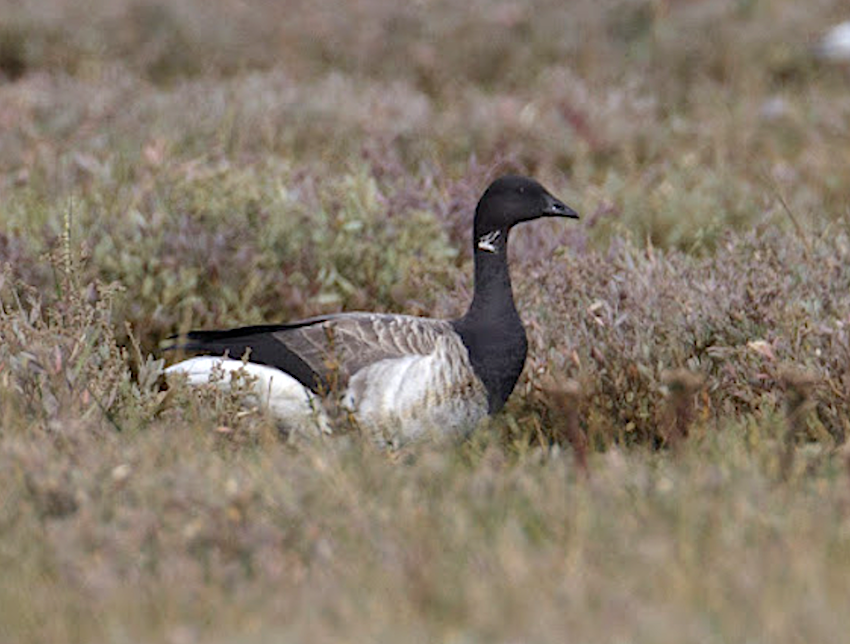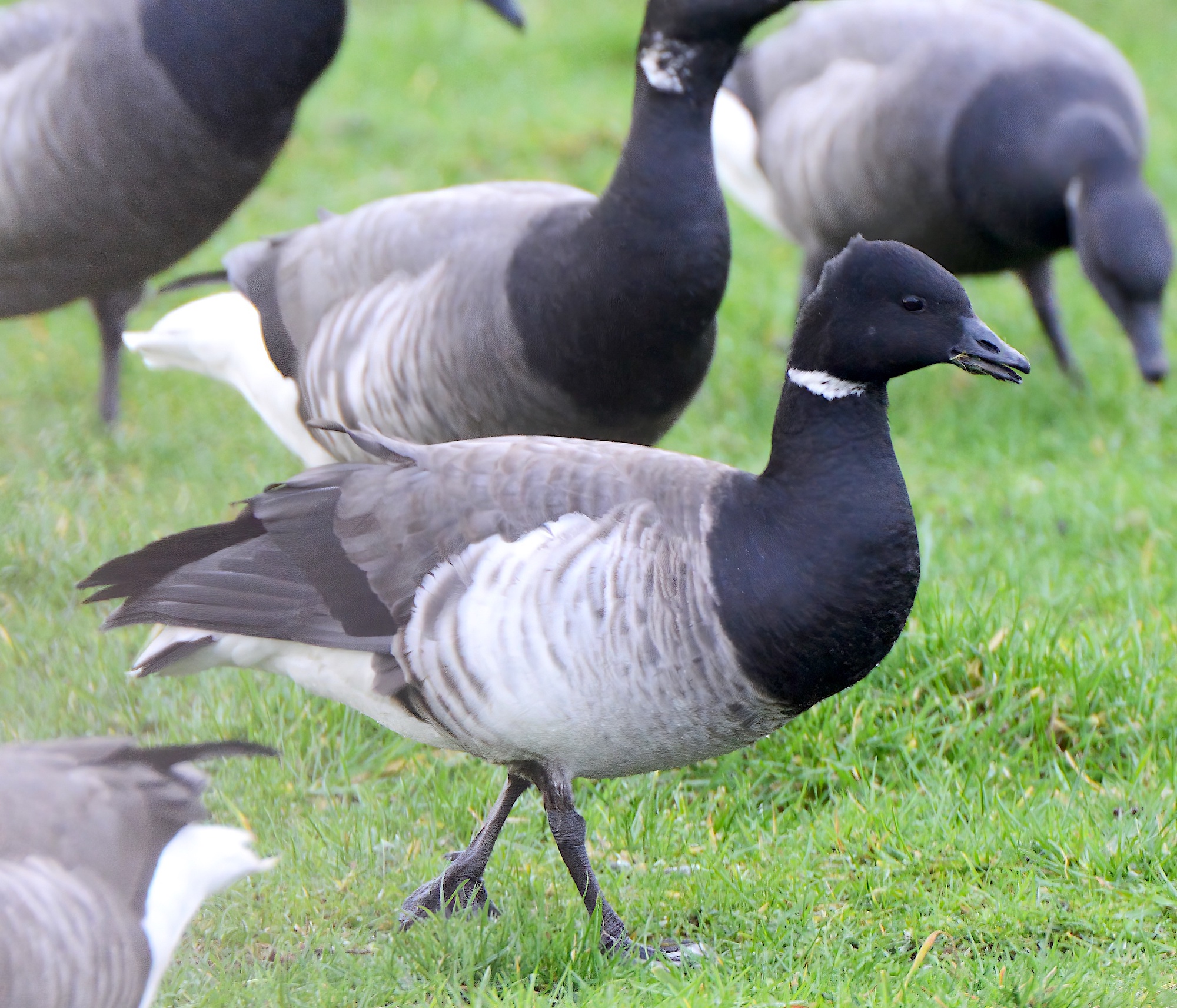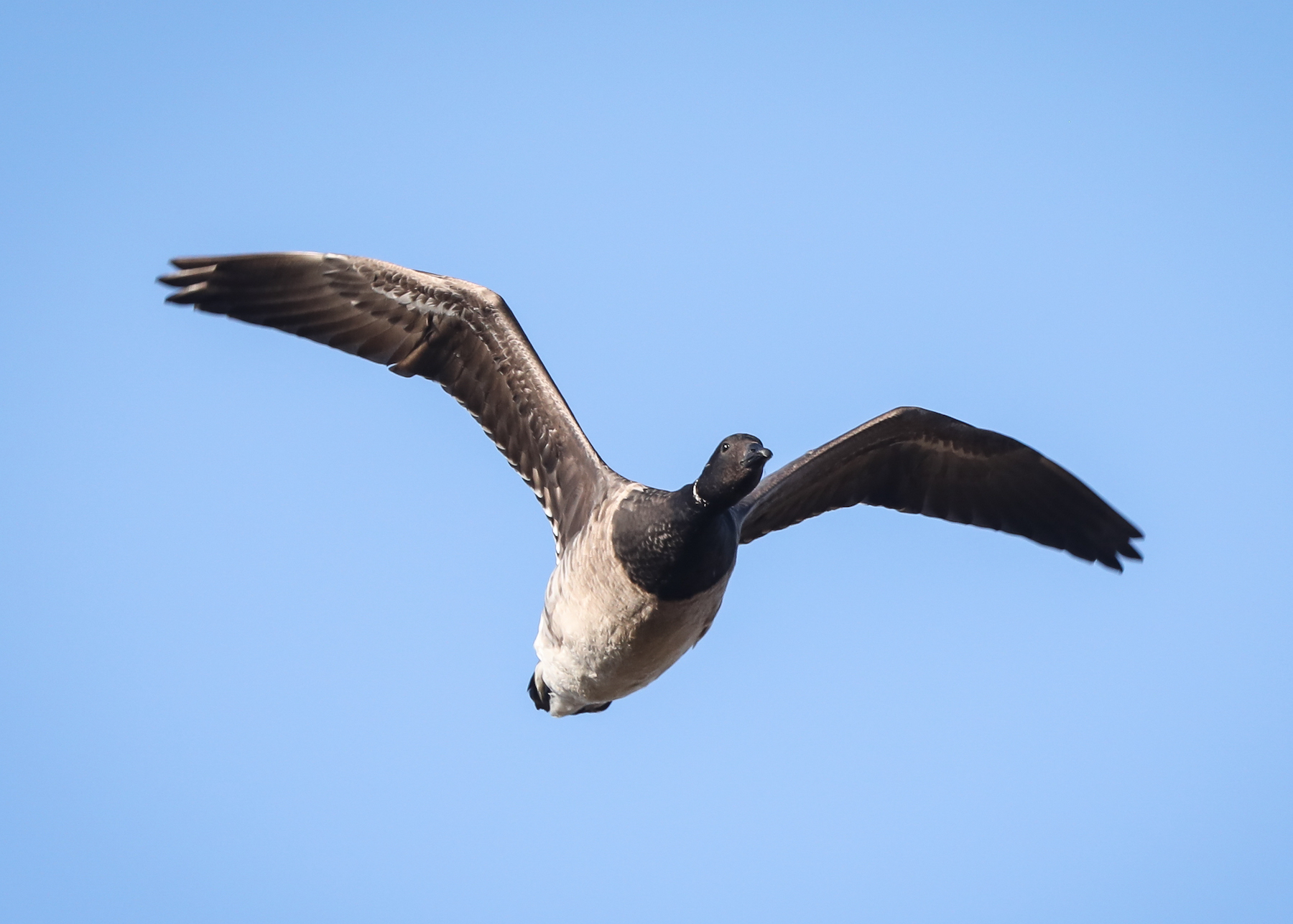Pale-bellied Brent Goose Branta bernicla hrota
Scarce coastal winter visitor, in variable numbers, generally October-March.



During the last half of the nineteenth century, Dark-bellied Brent Geese B. b. bernicla were regularly sighted on the coast, numbers being related to weather conditions. Pale-bellied Brent, P. b. hrota were scarce visitors particularly during hard winters. After 1917 they occurred mostly singly with the Dark-belled flock as an irrregular vagrant. In modern times this race has been recorded annually since 1979, in small numbers on the NE coast and on The Wash and annual totals are usually less than 50 but with occasional weather-dependent influxes. They have two main populations breeding and wintering in separate areas. One population breeds on islands in the Canadian Arctic and Greenland, and migrates through Iceland to winter in Ireland. The other population breeds on Svalbard and Franz Josef Land, wintering mainly in Denmark with a smaller number on Holy Island, Northumberland. In more recent years the island has held the entire English population and is the only regular location for Pale-bellied birds here.
(Account as per new Birds of Lincolnshire (2021) with minor addition, included September 2022)
